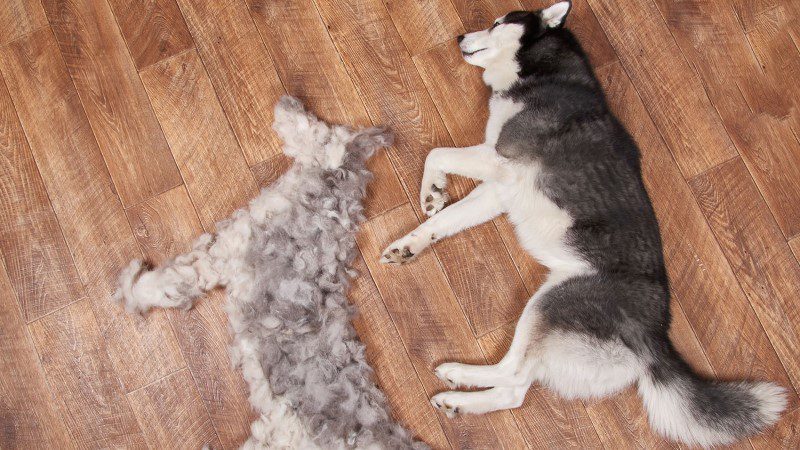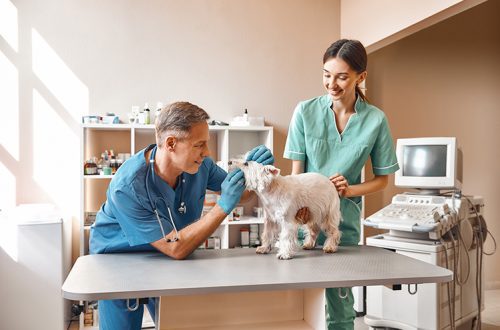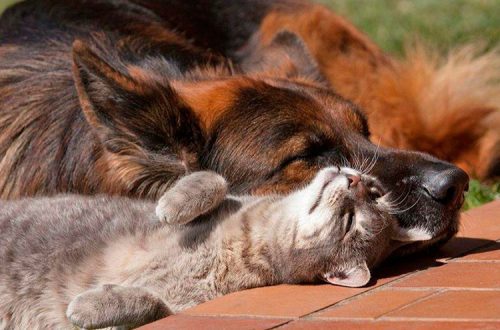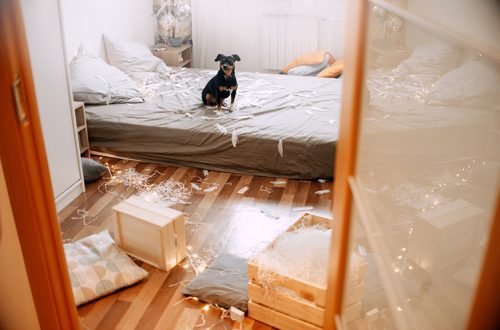
Shedding in a dog. What to do?
A question that worries many puppy owners is when does shedding begin in dogs? So, the first molt occurs in a pet at the age of about 2-3 months, when the puppy down is replaced by a denser “teenage” coat. At about six months, it becomes thicker, and the hair itself becomes heavier. In long-haired dogs, the process of changing the “teenage” coat can be delayed, not one molt will pass, but several. Short-haired pets are overgrown with adult hair by the year.
natural molt
The seasonal change of the pet’s coat occurs twice a year. In autumn, the animal changes its “summer” coat to “winter” – with a denser and thicker undercoat. In the spring, respectively, on the contrary: the wool thins, and the hair becomes shorter.
The duration of shedding depends on the type of pet’s coat. In breeds such as Akita Inu, Spitz or, for example, Sheltie, the change of coat will take a long time, because it is very thick. Short-haired dogs shed faster. Owners of Toy Terriers or American Hairless Terriers may not notice it at all.
It is noteworthy that in dogs living in an apartment, molting can occur almost all year round, but it will not be as pronounced as in pets that live on the street. The fact is that domestic dogs feel a change in temperature differently, namely, it affects the density of the animal’s coat.
Prolonged molting
If you notice that the coat has begun to fall out unplanned or the shedding is taking too long, you should contact your veterinarian. He will be able to establish the cause of the pathological process.
The reasons for prolonged molting can be the following:
Poor nutrition The dog’s diet should be formulated in accordance with the recommendations of the breeder or veterinarian. Choose quality foods that can provide your pet with the nutrients it needs.
Stress Moving, surgery or a long separation from the owner can also trigger hair loss in a pet.
Various diseases, including parasitic Hepatitis, endocrine and immune disorders, as well as many other diseases can lead to unplanned pet shedding.
What to do when a dog sheds?
In order for the seasonal molting to go unnoticed, and the floors and furniture in the apartment not to be covered with layers of wool, you must follow a few simple rules:
- Brush your pet. There are many different combs for all types of dog hair in pet stores – from massage mittens to professional brushes. Long-haired pets will have to be combed more often, almost every day. In this way, you will protect the dog from getting wool into the stomach and from the possible formation of tangles. Please note: not all breeds need to be brushed. Wirehaired dogs, such as the Fox Terrier or Giant Schnauzer, need to be trimmed. These animals in the process of development and formation of the breed have lost the ability to shed, but the hair is still gradually thinning and dying. To remove it, you need a special procedure – trimming.
- Walk your dog more often. Active walks and fresh air contribute to a faster change in the pet’s coat.
The best remedy for shedding dogs is the care and attention of the owner. You should not be nervous and even more so scold the dog for shreds of wool left on the furniture and floor. Careful care during this period will ensure not only the health and beauty of the pet, but also the cleanliness of the apartment.
,
October 24 2017
Updated: October 5, 2018





